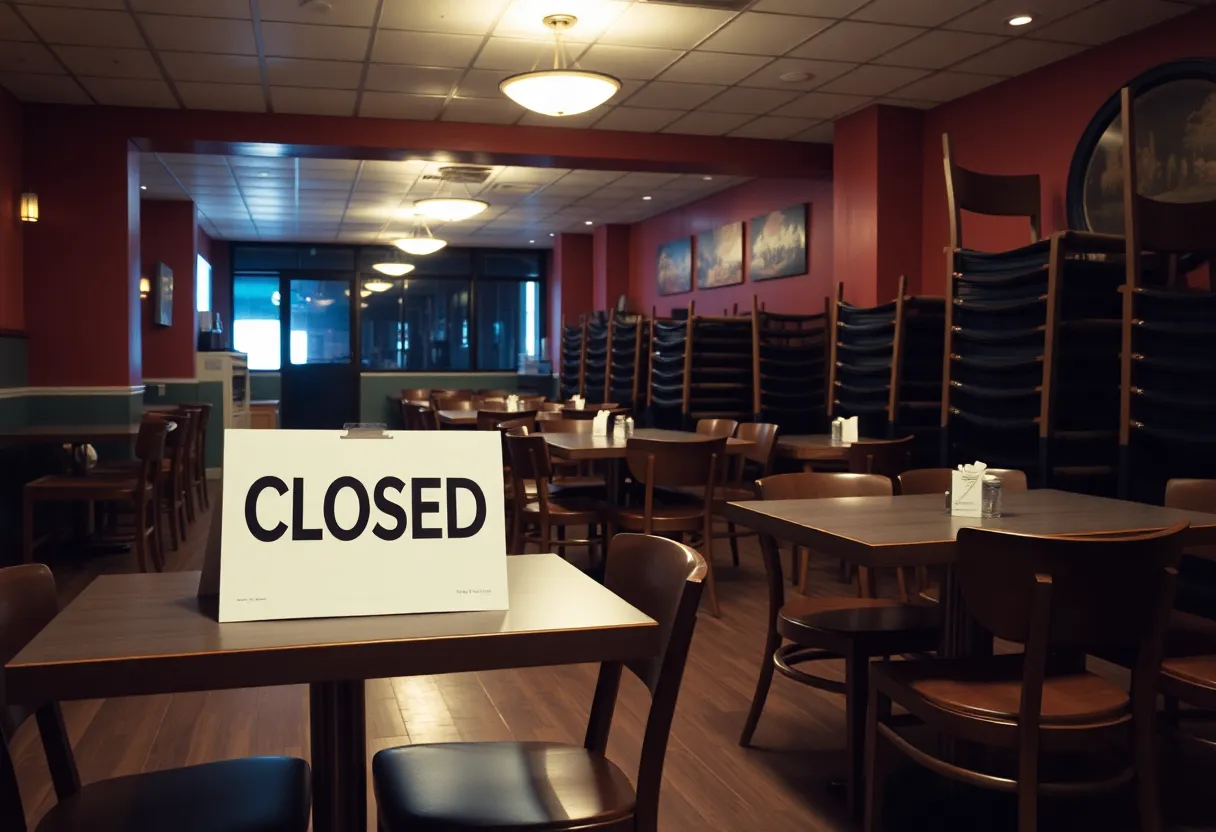News Summary
New York State is grappling with a daunting $34.3 billion budget deficit projected to last through 2029. As federal funding cuts loom, state agencies must adhere to flat funding levels and explore regulatory adjustments. Budget Director Blake Washington warns that anticipated revenue increases won’t cover the deficit created by federal changes. Concerns about potential cuts to key services like Medicaid and food assistance have been raised, prompting state officials to seek strategies to safeguard essential programs amidst financial uncertainty.
New York State is confronting a staggering $34.3 billion budget gap that is expected to extend through 2029, according to a recent announcement from the New York State Division of Budget. This substantial deficit comes at a time when federal funding cuts are anticipated to create even more significant fiscal challenges in the coming years.
On Thursday, state agencies received an annual call letter, requiring them to submit budget requests by October 24. In a bid to address the financial crisis, agencies have been instructed to maintain flat funding levels and identify areas where regulations can be scaled back. Despite current healthy revenue levels for the year, Budget Director Blake Washington cautioned that anticipated revenue growth will not be adequate to cover the expansive budget gaps driven by federal cuts.
Anticipated Federal Funding Cuts
The full impact of the expected cuts in federal funding is predicted to become clearer by the middle of the next fiscal year, suggesting the pitfalls may worsen by late 2026. Washington noted that there is a $750 million shortfall in the current fiscal year linked to changes in Medicaid from a federal spending bill, which could lead to a projected $3 billion annual deficit in the next fiscal year. Furthermore, the closure of a tax loophole for managed care organizations could result in a lost revenue potential of $3.7 billion for New York.
State Officials’ Concerns
With a focus on maintaining essential government services, state officials have expressed considerable concern over potential cuts to crucial social service programs, particularly Medicaid and food assistance. Governor Kathy Hochul has directed state agencies to formulate strategies to mitigate the adverse impacts on critical state programs and has asked them to evaluate their operations for any outdated or unnecessary programs that may be restructured or eliminated.
Future Budget Strategy
The executives’ budget is set to be presented by Governor Hochul in January, followed by legislative hearings and negotiations starting in March. To facilitate this process, agencies must submit their proposed reforms along with their budget requests by the October deadline for evaluation.
Amidst the fiscal uncertainties, various stakeholders have suggested that increasing taxes on high earners could be a means to counteract the federal cuts. However, Washington has warned that substantial tax hikes may not resolve the issues effectively and could hinder the state’s competitiveness with neighboring states, especially as New York faces demographic decline pressures.
Legislative Perspectives
Assemblymember Sarah Clark has expressed hope that any budget cuts will be approached carefully and deliberately rather than indiscriminately, while Republican Senator Rob Rolison has called for prioritization of essential government services in budgetary considerations. Both perspectives underline the need for a balanced approach amid escalating financial challenges.
The Path Ahead
As discussions relating to the federal changes and their implications for New York’s budget unfold in the coming months, there are expectations that these negotiations will be contentious. Early estimates suggest that the overall budget gap could nearly double due to anticipated federal cuts, which raises further concerns specifically surrounding healthcare services.
With the groundwork being laid for the upcoming budgetary discussions, both legislative members and state officials recognize the impending difficulties of maintaining critical programs against a backdrop of dwindling resources and heightened service demands. Addressing these challenges will require significant planning, strategic foresight, and a commitment to align spending with available revenue.
Deeper Dive: News & Info About This Topic
- City & State NY: Federal Cuts Leave New York $750 Million Budget Gap
- Wikipedia: Budget Deficit
- Finger Lakes 1: Rural Schools Brace for Major Budget Cuts
- Google Search: New York State Budget Cuts
- Politico: New York Will Struggle to Absorb Trump’s Megabill Cuts
- Google Scholar: New York State Budget
- Spectrum Local News: State Budget Director – N.Y. Faces Additional $3B Deficit Due to Federal Cuts
- Encyclopedia Britannica: State Budgets
- New York Times: Trump Budget and New York
- Google News: 2025 New York Budget

Author: STAFF HERE NEW YORK WRITER
The NEW YORK STAFF WRITER represents the experienced team at HERENewYork.com, your go-to source for actionable local news and information in New York, the five boroughs, and beyond. Specializing in "news you can use," we cover essential topics like product reviews for personal and business needs, local business directories, politics, real estate trends, neighborhood insights, and state news affecting the area—with deep expertise drawn from years of dedicated reporting and strong community input, including local press releases and business updates. We deliver top reporting on high-value events such as New York Fashion Week, Macy's Thanksgiving Day Parade, and Tribeca Film Festival. Our coverage extends to key organizations like the Greater New York Chamber of Commerce and United Way of New York, plus leading businesses in finance and media that power the local economy such as JPMorgan Chase, Goldman Sachs, and Bloomberg. As part of the broader HERE network, including HEREBuffalo.com, we provide comprehensive, credible insights into New York's dynamic landscape.





